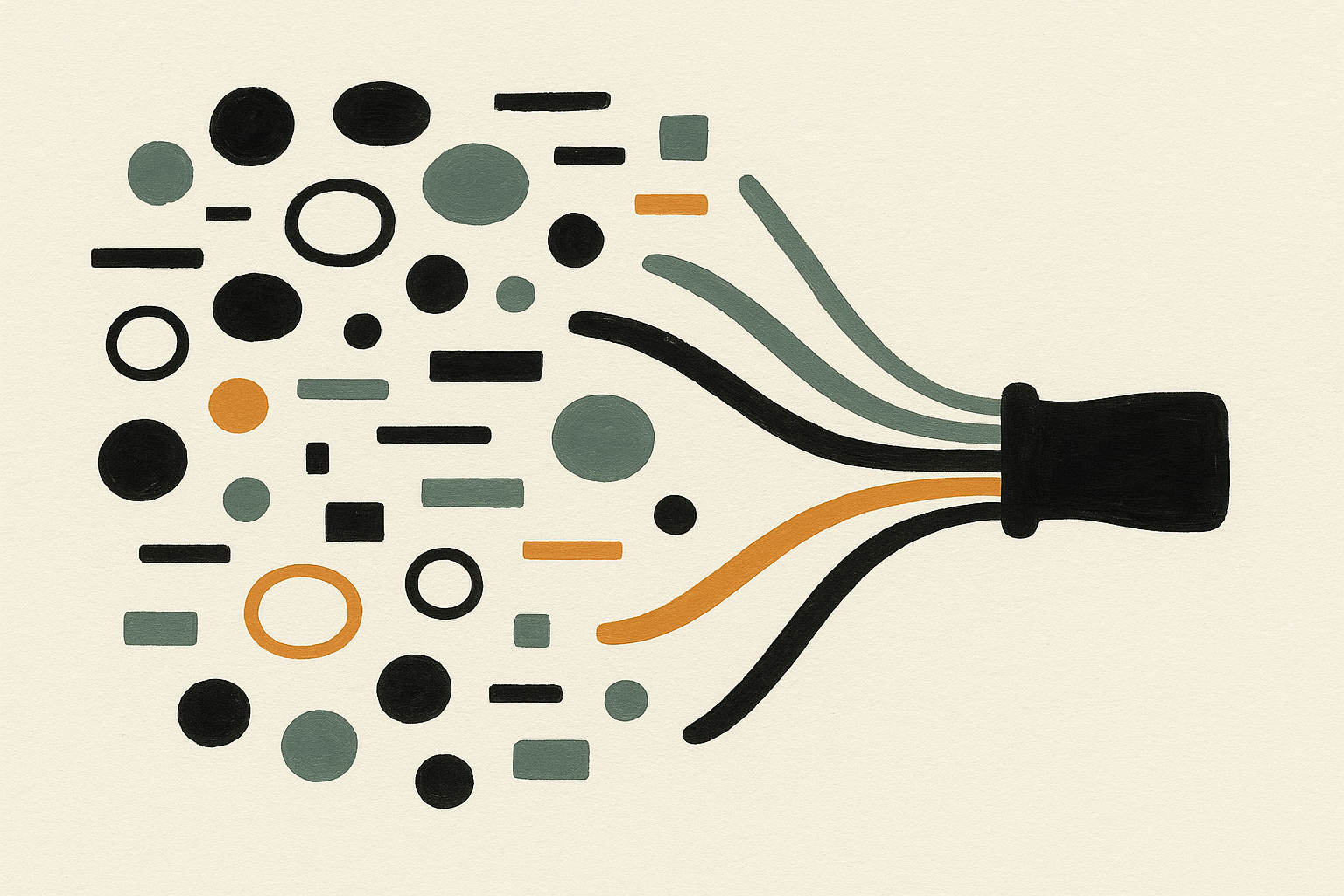The foresight bottleneck is broken: what agentic AI changes (and what it doesn't)

If you work in foresight, you know the feeling. Endless context-switching. Drowning in signals and data. Colleagues asking for fast answers while you struggle to ensure engagement. And too often, little visibility into the actual impact of all your hard work.
This is the foresight bottleneck. And it isn’t about a lack of talent or ambition. It’s about workflows that cannot keep up with the scale and speed of today’s change.
Enter agentic AI: a way to break the bottleneck without burning out your team.
Why foresight has felt bottlenecked
Foresight managers, innovation teams, and strategy leads are under pressure to do more with less. They need to anticipate shifts, track weak signals, and synthesize trends into actionable insights. Yet, certain obstacles keep coming up again and again:
- Constant context switching across topics and stakeholders
- Ever-expanding volumes of signals and data to process
- Difficulty engaging colleagues and securing shared ownership
- Low visibility into the long-term impact of foresight deliverables
These challenges create the perception of a bottleneck. But the real issue isn’t human capacity. It’s the workflow itself.
Where agentic AI delivers real value
This is where AI agents shine. They can process volumes of information at a scale that humans simply cannot. And they can go well beyond what the chat-based interfaces of generative AI offer. Agentic AI helps foresight professionals by:
- Automating horizon scanning: reviewing thousands of sources in minutes
- Clustering and synthesizing signals: identifying patterns and relationships
- Drafting structured insights: generating first versions of trend or technology descriptions
- Speeding up scenario exploration: outlining alternative futures based on uncertainties
As Panu Kause, CEO of FIBRES, explained in our recent webinar, “Agentic AI is incredibly powerful at scanning, clustering, and summarizing vast datasets. But the final sense-making is still a profoundly human job.” With AI agents, foresight professionals gain speed and scale without scaling their team.
What AI cannot replace
While AI agents are excellent at processing information, there are limits to what they can do. FIBRES’ Foresight Agents are able to tune in to the context described by the foresight pro and produce a great starting point, but the real impact comes after:
- Context-specific sense-making: Only humans understand the unique context and nuances of their organization and its strategy.
- Shared ownership and engagement: Insights that come from collaboration carry more weight than reports generated in isolation.
- Foresight mindset and culture: AI cannot foster openness to multiple futures or challenge ingrained assumptions, foresight professionals are the key players here.
Or, as Panu put it: “The value of foresight isn’t just in the outputs, it’s in the process where people co-create and build shared understanding.”
The risk of skipping the human work
If foresight teams rely too heavily on AI, they risk undermining the very value they are trying to create. Fast results without collaboration can lead to a worse situation where learning is reduced across teams and ownership of insights and recommendations is weak.
On top of that, it’s pretty easy to imagine how further siloing happens as individuals “chat with their AI” instead of discussing with colleagues. The outcome: shattered foresight that looks polished if you look at the individual pieces, but fails to drive action, or even worse, drives every individual in the organization to separate directions.
The hybrid foresight workflow
The most effective approach is hybrid: humans and AI in sequence.
- Human at the start: Define the purpose, research questions, and success criteria. Engage stakeholders early.
- AI in the middle: Scan, cluster, and synthesize large volumes of data into structured insights.
- Human at the end: Validate insights, build shared understanding, and translate results into decisions and action.
“You shouldn’t see AI results as the end of foresight work. They are a starting point for deeper human engagement”, Panu Kause underlines. Human processing, and hopefully collaborative at that, is what gets you to the next level.
Key takeaways for foresight professionals
Agentic AI is breaking the foresight bottleneck. But impact still depends on how humans use it.
- Use AI to handle scanning and synthesis at scale.
- Keep humans central for context, culture, and collaboration.
- Avoid the “AI did it” trap. Make foresight participatory.
- Think of AI outputs as the first draft, not the final word.
- Design hybrid workflows that free up time for engagement and action.
With the right balance, foresight teams can deliver faster, deeper, and more impactful insights.
FIBRES is the purpose-built foresight platform that brings these hybrid workflows to life, combining AI agents with collaborative features so foresight professionals can focus where they add the most value. Book a demo to see it all in action.
Dani Pärnänen The Chief Product Officer at FIBRES. With a background in software business and engineering and a talent for UX, Dani crafts cool tools for corporate futurists and trend scouts. He's all about asking the right questions to understand needs and deliver user-friendly solutions, ensuring FIBRES' customers always have the best experience.
Stay in the loop
Get our latest foresight tips delivered straight to your inbox. You may unsubscribe from these communications at any time.